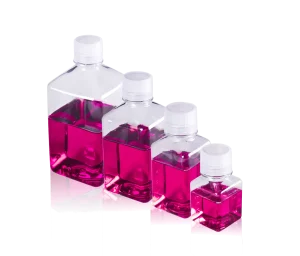Introduction
Chemical storage in laboratory settings demands containers that ensure safety, integrity, and compatibility with various substances. This article examines the critical question: Are 250ml transparent reagent bottles suitable for storing corrosive chemicals or acids? Understanding the bottle materials, chemical resistance properties, industry standards, and best practices is essential for safe and effective chemical storage.

Centrifuge Tube
Types of Materials Used in 250ml Transparent Reagent Bottles
- Glass
Borosilicate Glass
Properties: Borosilicate glass is renowned for its high thermal shock resistance, making it suitable for extreme temperature changes without breakage. It also exhibits excellent chemical resistance against most acids, bases, and solvents commonly used in laboratories.
Advantages: Superior chemical inertness and transparency, allowing for easy visual monitoring of stored substances.
Applications: Widely used in laboratories for storing various corrosive substances due to its robustness and chemical compatibility.
Soda-Lime Glass
Properties: Soda-lime glass, while less resistant to thermal changes compared to borosilicate glass, is cost-effective and provides moderate chemical resistance.
Advantages: Affordability and acceptable chemical resistance make it suitable for less aggressive chemical storage.
- Plastics
High-Density Polyethylene (HDPE)
Properties: HDPE offers good chemical resistance against a broad range of acids and bases, making it suitable for storing various laboratory reagents.
Advantages: Lightweight, durable, and less prone to breakage, making it ideal for fieldwork or applications requiring portability.
Limitations: Might not be suitable for highly aggressive or aromatic solvents.
Polypropylene (PP)
Properties: PP exhibits good chemical resistance against many acids, bases, and organic solvents. It also has higher heat resistance compared to HDPE.
Advantages: Increased thermal stability, suitable for applications requiring higher temperatures during storage or processing.
Limitations: May not be suitable for storing substances at extreme temperatures or highly reactive chemicals.
- Other Materials (if applicable)
Fluoropolymers (e.g., PTFE):
Properties: Fluoropolymers exhibit exceptional chemical resistance, particularly against strong acids, bases, and highly corrosive substances.
Advantages: Excellent inertness and resistance to extreme temperatures, making them suitable for specialized applications requiring utmost chemical stability.
Limitations: Higher cost compared to other materials, limited use in standard laboratory settings due to specific requirements.
Specialized Polymers (e.g., PVDF)
Properties: Specialized polymers like PVDF offer unique chemical resistance profiles, often being inert to a wide range of aggressive chemicals and solvents.
Advantages: Superior chemical stability and resistance to harsh environments, suitable for specific laboratory applications where standard materials might not suffice.
Limitations: Costlier than conventional materials, primarily used in niche applications.
Chemical Compatibility of Transparent Reagent Bottles
- Evaluating Suitability
Transparent reagent bottles serve as crucial vessels for storing a wide array of chemicals in laboratory settings. Assessing their compatibility involves considering the bottle material and its ability to withstand the corrosive nature of stored substances without degradation.
- Substance-Specific Considerations
Acids and Bases
Glass Compatibility: Borosilicate glass demonstrates robust resistance to most acids and bases commonly used in laboratories. It provides a suitable environment for storing solutions with pH variations.
Plastic Compatibility: High-Density Polyethylene (HDPE) and Polypropylene (PP) generally show compatibility with various acids and bases but might exhibit limitations with highly concentrated or aromatic solutions.
Solvents and Organic Compounds
Glass Suitability: Borosilicate glass offers good compatibility with many solvents and organic compounds, ensuring minimal interaction or leaching of substances.
Plastic Suitability: HDPE and PP provide moderate resistance to organic solvents but might not be suitable for highly aggressive or aromatic solvents due to potential interactions.
Strong Corrosive Substances
Fluoropolymers and Specialized Polymers: Materials like PTFE or PVDF excel in withstanding strong corrosive substances, including highly concentrated acids or aggressive chemicals. They offer exceptional chemical inertness and resistance, making them suitable for the most challenging chemical storage requirements.
- Material-Specific Challenges
Glass Limitations: While borosilicate glass demonstrates high chemical resistance, certain reactive compounds or extreme conditions may pose limitations, potentially necessitating the use of alternative materials.
Plastic Constraints: Plastics like HDPE and PP, despite their resistance, might exhibit limitations with certain aggressive chemicals or at extreme temperature conditions, demanding careful consideration for suitable applications.
- Temperature and Duration Impact
Temperature Sensitivity: Extreme temperatures might affect the chemical compatibility of both glass and plastics, leading to potential material degradation or leaching of substances.
Storage Duration: Prolonged exposure of substances stored in transparent reagent bottles, regardless of material, can impact compatibility. Extended storage periods might lead to subtle material interactions or degradation, especially in reactive solutions.
- Substance Compatibility Guidelines
Understanding the specific chemical compatibility of different bottle materials with various substances aids in selecting the most suitable containers for storing corrosive chemicals or acids in laboratory settings.
Chemical Resistance Properties of Transparent Reagent Bottles
- Glass Chemical Resistance
Glass demonstrates high resistance to a wide array of corrosive substances, making it a preferred choice for many chemicals used in laboratories.
- Plastic Chemical Resistance
Different plastics offer varying degrees of chemical resistance; for instance, polypropylene may resist certain acids better than other plastics.
Factors Influencing Chemical Compatibility
- Substance Characteristics
The concentration, type, and specific properties of corrosive substances influence the choice of bottle material for safe storage.
- Temperature Sensitivity
Temperature variations can affect the chemical compatibility of bottles with corrosive substances, necessitating consideration in storage conditions.
Industry Standards and Guidelines
- Safety Standards
Compliance with industry standards and certifications ensures the suitability and safety of 250ml transparent reagent bottles for chemical storage.
- Certifications and Compliance
Understanding the certifications and guidelines pertinent to chemical storage containers aids in selecting appropriate bottles.
Best Practices and Recommendations
- Material Selection Guidelines
Guidelines to assist in selecting the most suitable bottle material based on the corrosive substances being stored.
- Storage Recommendations
Best practices for handling, storing, and managing corrosive chemicals or acids in transparent reagent bottles.
Conclusion
- Summary of Key Factors
Highlighting the critical considerations in assessing the suitability of 250ml transparent reagent bottles for storing corrosive chemicals or acids.
- Emphasizing Safety and Compatibility
Underlining the importance of material compatibility and adherence to safety guidelines for secure chemical storage practices.




